Google Trends offers free access to arguably the most interesting and useful dataset of our lifetimes, providing a number of immense advantages over other tools. But while it has many pros, there are also a handful of disadvantages to be aware of when using it to make critical business or research decisions.
We'll explore each of these, beginning with the benefits.
Benefits of Google Trends
1. Massive dataset
Google Trends lets anyone peer inside the world's largest search engine. With billions of daily users making a total of over 8.5 billion searches every day, Google Search data represents a vast cross-section of human interests and behaviors.
2. Real-time insights
One of the most valuable advantages of Google Trends is its real-time data. Unlike traditional market research tools that can take weeks or months to reveal insights, Google Trends offers a minute-to-minute view into the behavior of billions of people. This lets you spot trends as they emerge and respond to them in real-time, before the competition.
For example, this third-party case study shows how in January 2023, top third-party SEO tools, like SEMRush, showed ChatGPT as having zero search volume - when it had already been featured in every major newspaper and mentioned over half a million times on Reddit and Twitter. On the other hand, Google Trends detected ChatGPT’s spike in interest in real-time.

SEMRush (top) shows no data for ChatGPT, while Google Trends via Glimpse (bottom) reveals a significant spike in January-February 2023.
3. Digital truth serum
A unique benefit of Google Trends data is its inherent honesty. Studies have shown that people are more honest in their Google searches than they are with their spouses or even best friends. This gives a rare window into genuine human interests and concerns that would likely not appear in traditional research methods (e.g. surveys and focus groups) or even more modern ones (e.g. social media data).
4. Minimal bias
Excluding Russia, China, and Korea, Google is the dominant search engine in nearly every single country. This widespread use minimizes regional biases that might occur with less ubiquitous platforms, making Google Trends data more representative of global interests.
5. Free access
Google Trends is free to use!
6. Custom queries
Users can explore any keyword they're interested in, not only select terms that are pre-curated as is often the case with other trend analysis tools (e.g. Pinterest Trends).
7. Historical
Access to over two decades of data allows for long-term trend analysis and tracking shifts in consumer demand and preferences. This type of analysis is not available with newer tools (e.g. TikTok Trends).
8. Unrestricted queries
While Google Ads prohibits certain subjects like cryptocurrencies, alcohol, and medicine, Google Trends provides unrestricted access to all keywords. Unfortunately, many trend analysis tools only rely on the Adwords API to gather search data, therefore providing limited insights.
Disadvantages of Google Trends
While Google Trends offers many advantages, it's important to understand its limitations to make sure you’re using it properly. Many parts of the tool can be easily misunderstood, so it’s worth taking the time to go through a complete Google Trends guide.
1. No absolute search volume
The primary disadvantage of Google Trends is the fact that it provides relative search interest, not absolute volume. In other words, searches are measured on a scale of 0-100, as opposed to the number of times it was actually searched, which makes it practically impossible to know the size of a topic. (Learn more about relative interest here).
Glimpse, a Chrome extension that enhances Google Trends, solves this by integrating absolute search volume data into Google Trends results.
2. Limited trend discovery
Google Trends excels at providing data for known search terms, but offers little help when it comes to discovering unknown or emerging trends. This limitation can hold back exploratory research and the identification of niche opportunities, as you can only search for terms you're already aware of.
Glimpse solves this by tracking every keyword searched online, categorizing them, and then highlighting those with sustained growth. This allows you to enter any category or keyword and discover emerging trends you would have never known to look up.
3. Sampled data
To improve load times and keep costs down, Google Trends retrieves a sample of all results for a given query, rather than the entire dataset (they explain why in their documentation). Unfortunately, sampling has a couple key limitations:
Potential inconsistencies: For niche topics or regions with lower search volumes, sampling can lead to inconsistencies, meaning you may receive different results when searching the same topic at different times. On average, Google Trends caches all searches for a few hours, which means that if you search a keyword and refresh the page a few minutes later, the data will remain the same. However, if you refresh again after a few hours, you might notice slight differences due to sampling error.
Data threshold: Additionally, using sampling means that activity for a keyword typically needs to reach a certain threshold before it becomes meaningfully represented. Generally, a keyword requires roughly several hundred searches within a month's span before it starts to show up in a way that's actually useful for any analysis.
4. Search term ambiguity
Google Trends doesn't always distinguish between different meanings of the same word, such as "Apple" the fruit and "Apple" the company, which can lead to misleading results for ambiguous terms. You need to be careful when analyzing trends for words or phrases that could have multiple interpretations.
Despite these limitations, Google Trends can yield invaluable insights, especially for search terms with sufficient volume.
Overcoming Google Trends’ limitations
While Google Trends insights are powerful, the Glimpse extension overcomes and excels beyond its limitations by providing:
Absolute volume, growth, and forecast for every keyword to quickly grasp its size, growth rate, and projected performance with 87% accuracy.
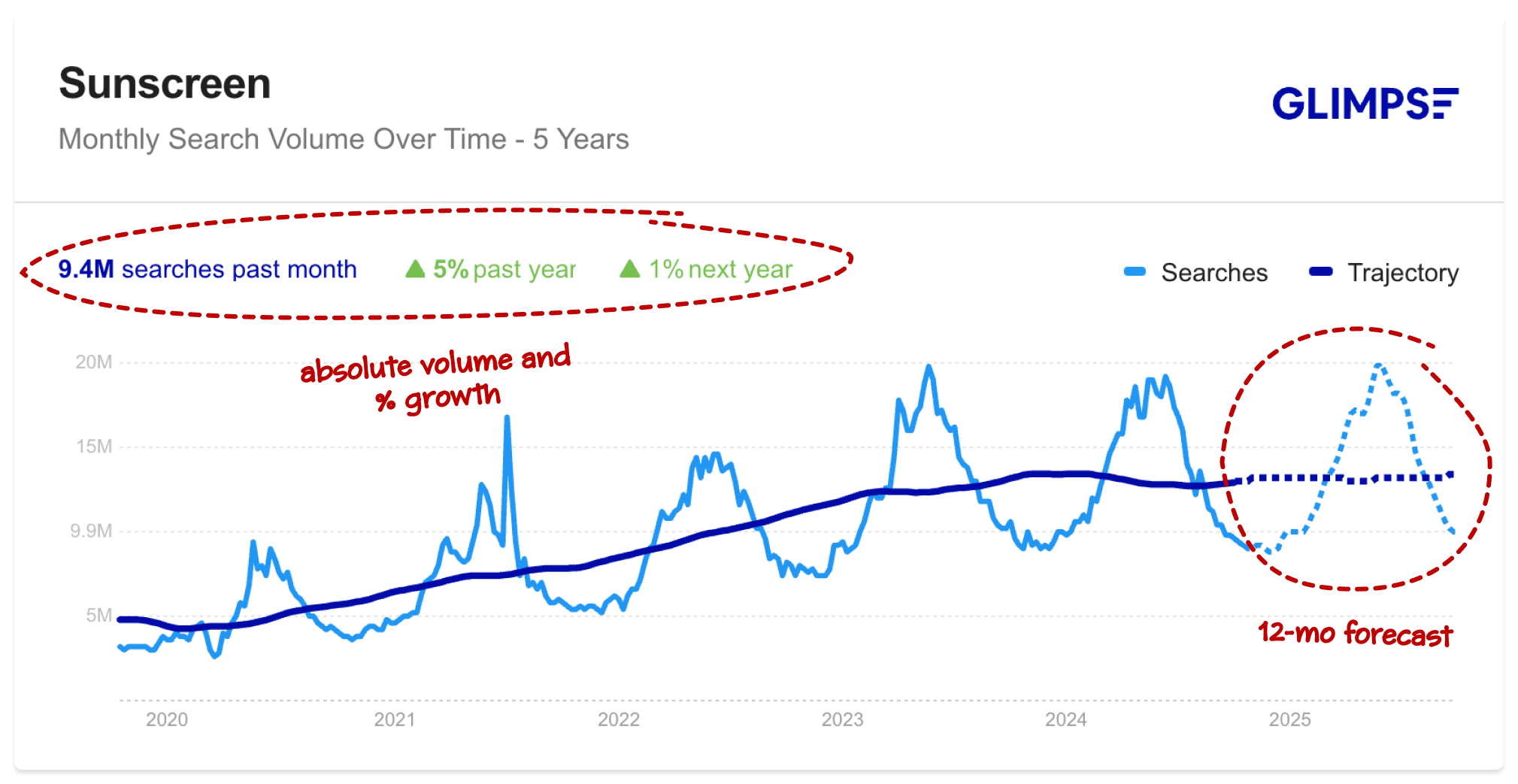
Long-tail data to determine what people search alongside any query, sorted by search volume.
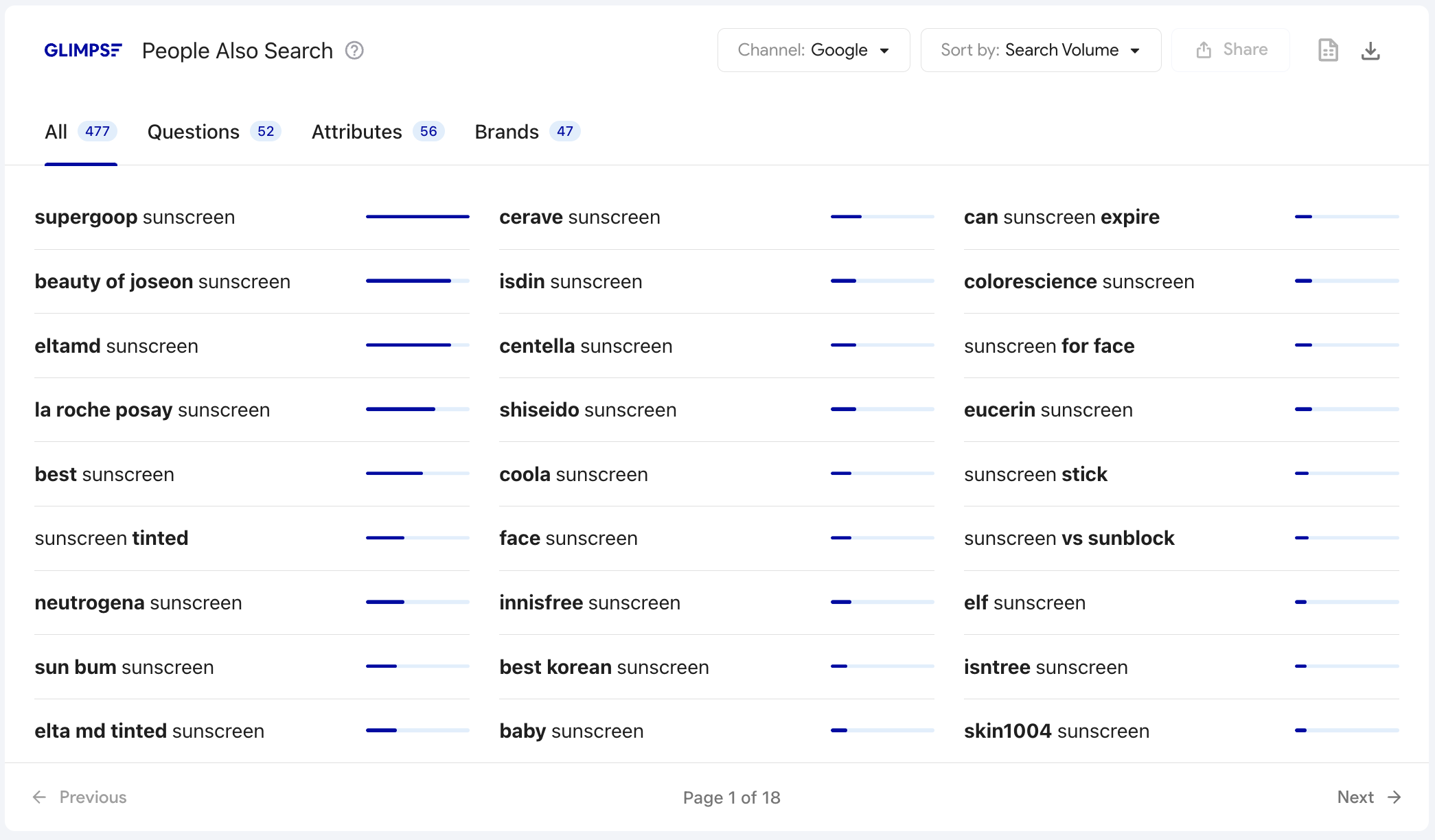
Seasonality visualization and explanation to spot and understand recurring patterns.
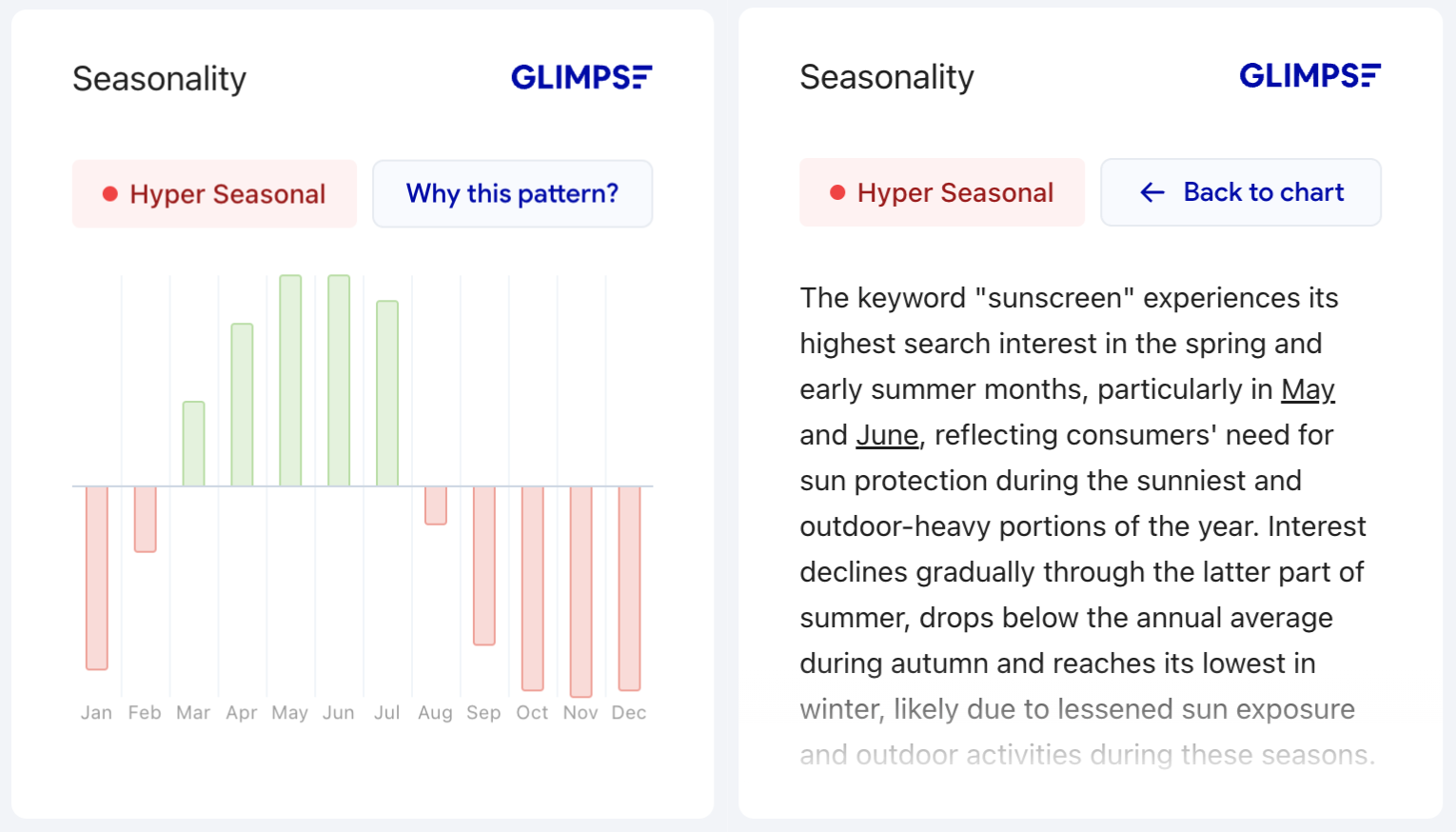
Social ranking to see which platform a topic is most discussed on and direct qualitative research.
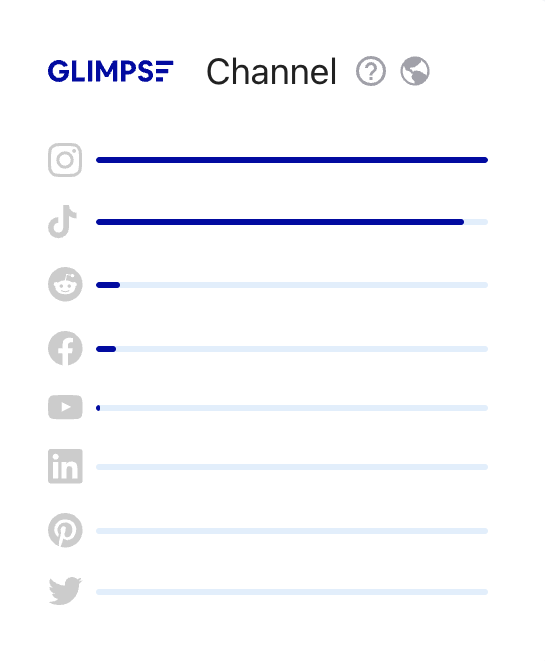
Recommended trends in any category to uncover keywords you would have never known to look up.
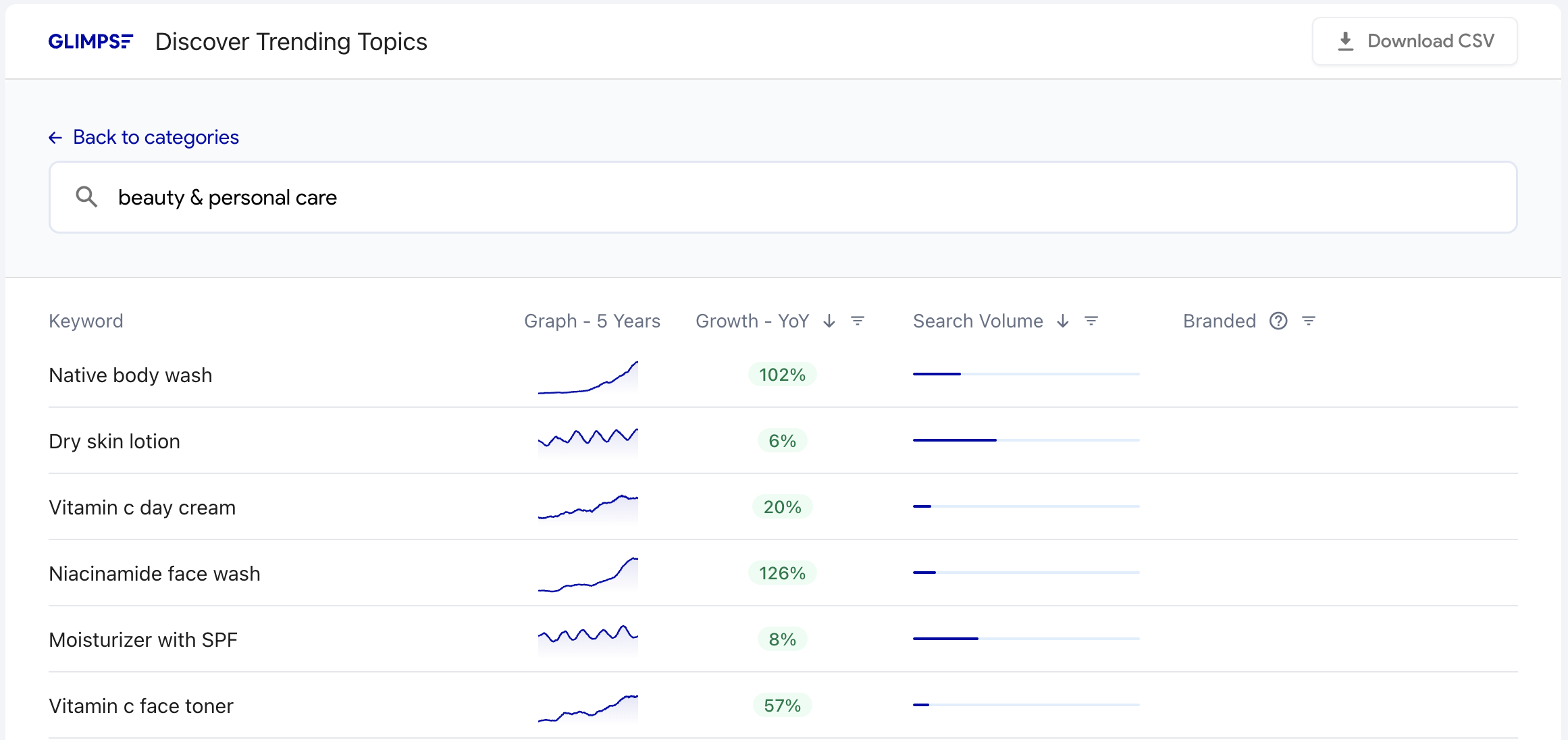
Sign up for a free Glimpse account and get 10 searches per month to pull richer insights from Google Trends.
In conclusion, while Google Trends certainly has its share of cons, it is a world-class tool, and most of these downsides can be overcome using supplemental tools like Glimpse, as well as advanced search techniques.




